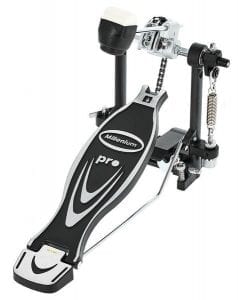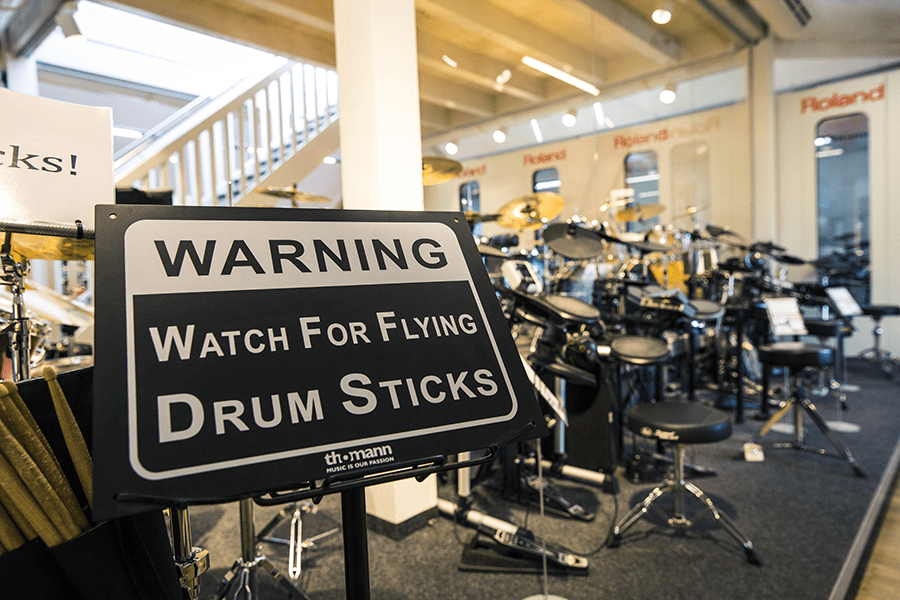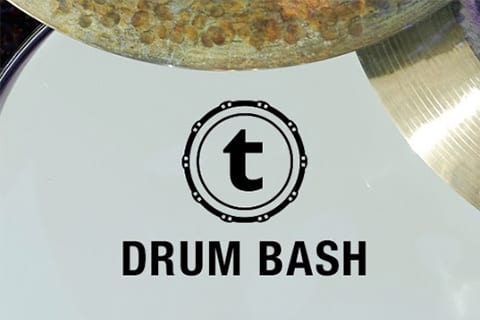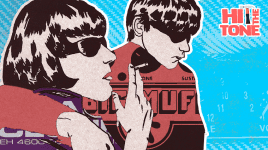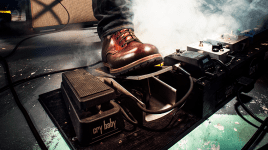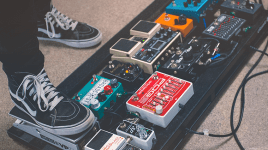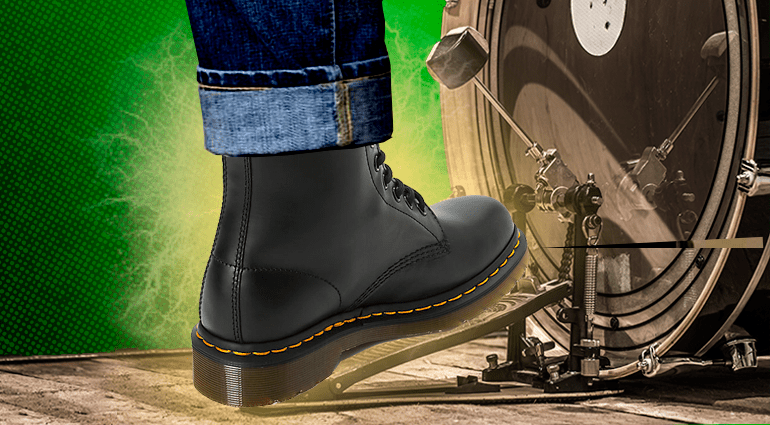
On the musical instrument market there are a lot of kick drum pedals (also known as a “bass drum pedal”) competing for the favour of drummers. With so many different concepts and designs it’s not so easy for beginners to keep track of things. Below we hope that you can inform yourself about the right bass drum pedal for your needs. ??
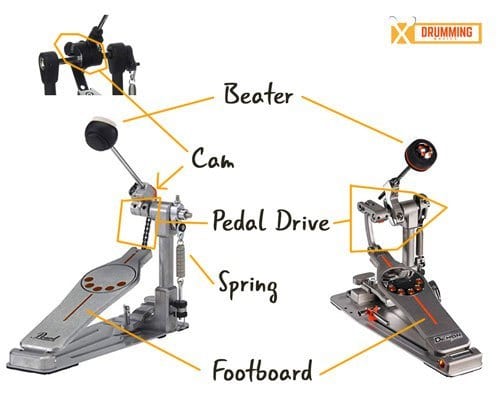
courtesy of DrummingBasics.com
Major differences between price categories
The price range between a single entry-level pedal and a top-of-the-line high-end model is around 40 to almost 600 euros. Of course, the question arises as to what could cause such a great difference, it’s only a simple mechanical device, right?
Well, first there is the design. More expensive pedals are usually equipped with higher quality components and materials and are carefully designed and assembled. Low backlash or even backlash-free bearings and hinges, ball bearing joints and shafts with low tolerances ensure low resistance and power loss. In practice, this means that a cheaper pedal, when frequently used, can wear out much faster and start to feel more unstable underfoot.

The very expensive models are also built in western industrial countries, where labour costs are higher. Another price driver is aluminium components milled from solid material instead of cast iron used for cheaper models. Those who want a lot of adjustment options on their pedals often have to dig a little deeper into their pockets.
If you want to buy a good pedal, but don’t exactly have a performance direction yet, we recommend a mid-range model, i.e. between 80 and 200 Euros. Of course, make sure to test out at least a few pedals before buying, because buying a kick drum pedals is very subjective.
But as a guideline: the more rapidly and powerfully you play (ie heavy metal), the more worthwhile it is to invest in a stable pedal. For occasional drumming at home or the weekly pop music rehearsal a cheaper pedal might do the job. Here you can see three models from three price ranges:
- Millenium PD-111 Pro €35
- Tama Iron Cobra €105
- DW MCD €598
What types of pedal mechanisms are there?
Chain drive
To transfer your foot’s movement to the beater, there must be a connection between the footboard and the cam. On most modern pedals you will find either a single or double chain. Chains have the advantage that they are flexible in shape and stable in size, ie they do not stretch. They thus form an ideal combination of organic playing feel and immediate transmission of movement. A double chain will offer a little more lateral stability, while a single chain will often feel slightly lighter and more agile. But these are only subtleties.
Belt (or Strap) Drive
Because most drummers opt for the chain drive, the belt drive (also known as strap drive) has become a bit of a marginal phenomenon with pedals. Instead of a chain, a piece of fabric is used, usually reinforced with Kevlar or synthetic fibres. This type of power transmission provides the softest and most organic feel. Depending on the pedal and your playing style and experience, the difference to the chain is not as drastic as expected.
Direct Drive
In bass drum pedals, a direct drive is a non-flexible connection between the footboard and the cam. This connection usually consists of a straight or slightly curved aluminium rod.
The advantage of this construction lies in its absolutely linear transmission of the foot movement to the cam, which completely eliminates any lagging of the footboard. This results in a very direct, predictable playing feeling, which is especially appreciated by those metal drummers who want to execute extremely fast hits. If you like it a bit more comfortable and organic in the foot, you’ll find it more with other drives.
Longboard or Shortboard?
In addition to the drive, many drummers are concerned about the question of which footboard concept would fit best before buying a pedal. Basically there are two variants.
The much more common is the shortboard design. The area on which the foot acts is divided in two. This is the movable footboard and the heel part, connected by a hinge. This design has been very suitable for most playing styles for decades.
With the advent of increased demands on playing speed, however, another concept has arisen, longboard pedals. The heel part is omitted here, so that a single, long foot plate is created, which is connected to the base plate by means of a hinge. Although this increases the moving mass, certain playing techniques such as “Heel-Toe” or “Constant Release” work better for some drummers, because the footboard is simply a decisive centimetre longer than on shortboards.
Adjusting your kick pedal
Setting up your pedal will definitely affect the way you play. As most drummers know, when you sit down at someone else’s kit the kick pedal is the first thing you notice feeling “off” or feeling like it’s not adjust to your personal preference. The beater angle, the spring tension and beater shaft length are all adjustable and this video explains it well and quite clearly:
You are currently viewing a placeholder content from Youtube. To access the actual content, click the button below. Please note that doing so will share data with third-party providers.
Advice & Contact
Do you have any questions or would you like a product consultation? Our colleagues in the drum and percussion department will be happy to advise you by e-mail, telephone or in person:
E-mail: drums@thomann.de Telephone: 09546-9223-40
Directions to our shop can be found HERE.
Don’t forget to check out our new drum-related YouTube channel called Drum Bash:
You are currently viewing a placeholder content from Facebook. To access the actual content, click the button below. Please note that doing so will share data with third-party providers.
More InformationYou are currently viewing a placeholder content from Instagram. To access the actual content, click the button below. Please note that doing so will share data with third-party providers.
More InformationYou are currently viewing a placeholder content from X. To access the actual content, click the button below. Please note that doing so will share data with third-party providers.
More Information